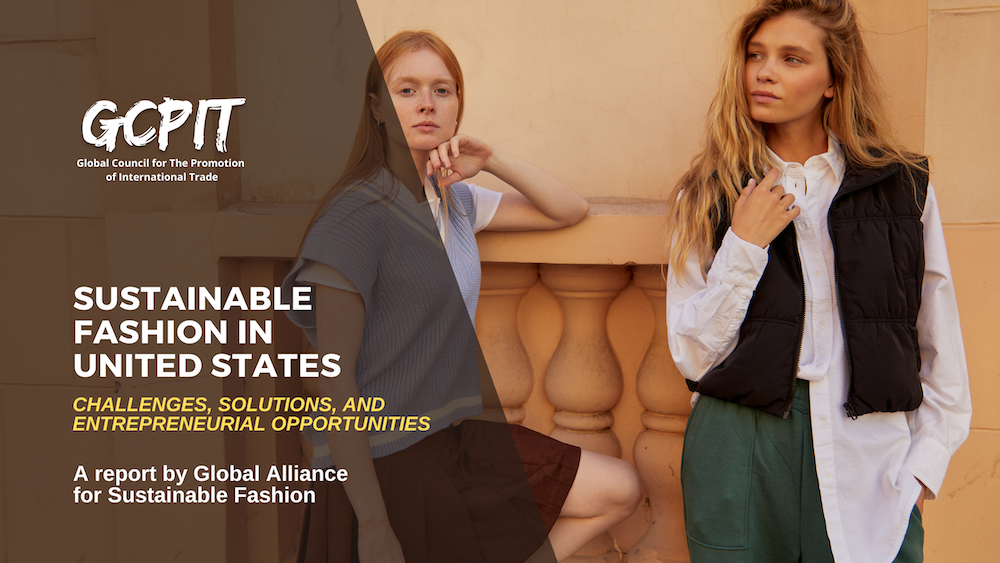How Cape Town Sustainable Fashion is Forming Eco-Conscious Buying
How Cape Town Sustainable Fashion is Forming Eco-Conscious Buying
Blog Article
Stay Ahead of the Contour by Checking Out Innovative Fashion Trends
In a sector as vibrant as style, staying in advance entails even more than just adhering to present patterns-- it demands an exploration of technology. The merging of technology and style advertises a new age of consumer involvement.

Accepting Smart Textiles
In current years, the garment industry has actually seen a transformative change with the assimilation of smart textiles, a cutting-edge advancement that mixes innovation with fabric. This evolution stands for not only a combination of looks and performance yet additionally a considerable jump in the direction of sustainability and customization in vogue. Smart textiles, also known as e-textiles, installed advanced electronic devices such as sensors and conductive strings within the material, allowing garments to engage with the environment or the wearer.
These fabrics are made to keep track of physiological specifications, such as heart rate or body temperature level, offering real-time health analytics. Past wellness applications, smart fabrics are likewise being made use of for adaptive clothing, which can alter color or pattern in feedback to ecological stimulations, hence providing a vibrant style experience.
Additionally, the development of energy-harvesting fabrics that generate power from motion or sunshine is leading the way for self-sufficient wearable technology. This technology is interesting eco mindful consumers and designers intending to minimize the ecological footprint of style. As r & d in this field advance, clever textiles are expected to come to be significantly widespread, improving the landscape of modern fashion with their multifunctional capabilities.
The Rise of 3D Printing
Changing the manufacturing landscape, 3D printing has become a game-changer in the fashion business. This innovative modern technology has made it possible for developers to push the boundaries of creativity, creating intricate and customized garments that were formerly unimaginable. By leveraging electronic layout and additive manufacturing, 3D printing facilitates the creation of intricate geometries and patterns, allowing developers to explore brand-new structures and frameworks.
A notable advantage of 3D printing in vogue is its capacity to create on-demand, minimizing waste and minimizing stock needs. This efficiency not only enhances production processes but additionally enables quick prototyping, allowing designers to bring their visions to life in a much shorter timeframe. Additionally, 3D printing supports customization somewhat unmatched by typical approaches, using tailored fits and unique layouts customized to private customer choices.
The increase of 3D printing has actually likewise equalized style, making it easily accessible to arising designers that can currently make top quality pieces without substantial financial investment in standard manufacturing framework. As modern technology remains to development, the fashion sector is positioned to harness the complete possibility of 3D printing, exploring new products and strategies that will most certainly redefine exactly how style is developed and generated.
Sustainable Style Innovations
As the fashion business comes to grips with journalism requirement for environmental responsibility, sustainable style innovations have emerged at the center of transformative change. The growing understanding of ecological effect has fueled a change towards more eco-conscious practices and materials. Developers and brand names are currently prioritizing sustainability, incorporating methods that decrease waste and reduce carbon footprints.
One substantial growth is the surge of round fashion, which emphasizes recycling and look here upcycling to extend the lifecycle of garments. This strategy not only decreases waste but also urges customers to adopt a much more mindful method to clothes intake. In addition, making use of sustainable products, such as organic cotton, hemp, and recycled polyester, has actually gained traction. These materials call for much less water and energy throughout production, substantially lessening environmental influence.
Another breakthrough exists in the fostering of ingenious dyeing strategies that make use of waterless processes or natural dyes, therefore lowering the large quantities of water and chemicals traditionally utilized in textile dyeing. In addition, developments in biotechnology have caused the production of lab-grown leather and textiles, using cruelty-free and eco-friendly options to conventional materials. With these pioneering initiatives, the fashion business is making purposeful strides towards an extra sustainable future.

Tech-Integrated Apparel
Tech-integrated apparel represents an innovative combination of style and modern technology, improving exactly how individuals interact with their clothing. This ingenious domain name is noted by the addition of wise textiles and embedded digital elements, enhancing both capability and aesthetic appeal. From health and fitness trackers embedded in sports apparel to heated jackets managed by means of smartphone applications, tech-integrated clothing offers consumers unprecedented benefit and versatility.
Introducing brand names are driving this fad, concentrating on developing garments that react to ecological stimuli or individual commands. For instance, some garments can change shade or pattern in reaction to temperature shifts, while others integrate biometric sensors to keep an eye on health metrics like heart rate or tension degrees. The smooth integration of innovation right into go to my site textiles additionally reaches ecological sustainability, with initiatives to establish self-cleaning fabrics or garments that change to weather, thus reducing the need for multiple layers.
Additionally, the arrival of wearable innovation is not just limited to apparel yet reaches accessories like watches and glasses, additional widening the range of tech-integrated fashion. As the market remains to innovate, the potential for modification and customization in clothing grows, providing consumers unique, tech-enhanced style experiences that accommodate their specific demands and preferences.
Future of Virtual Fashion
Recently, the future of online style has become a transformative pressure within the sector, leveraging improvements in digital technology to redefine just how style is produced, experienced, and consumed. By incorporating enhanced reality (AR), virtual reality (VR), and 3D layout tools, designers can now craft immersive and interactive experiences that go beyond standard style boundaries. Virtual fashion enables the production of garments that exist solely in digital atmospheres, offering unlimited opportunities for development without the constraints of physical production.
This digital shift not just offers chances for creative expression yet likewise addresses sustainability concerns integral in standard fashion methods. Cape Town Sustainable Fashion. By Visit Your URL getting rid of the demand for physical resources, virtual style reduces waste and decreases carbon footprints. In addition, the increase of digital fashion straightens with the enhancing customer demand for unique and personalized experiences, as online garments can be tailored and tailored to specific preferences effortlessly

Final Thought
The apparel industry's future depend on the integration of cutting-edge innovations and lasting methods - Cape Town Sustainable Fashion. Smart textiles and tech-integrated apparel are improving functionality, while 3D printing supplies chances for modification and waste reduction. Lasting fashion, via environment-friendly products and circular techniques, demonstrates a commitment to ecological stewardship. Additionally, digital fashion is poised to redefine customer interactions. Adapting to these patterns is vital for brand names seeking to stay appropriate and affordable in this swiftly developing landscape.
In current years, the style industry has experienced a transformative change with the combination of wise textiles, a sophisticated development that mixes modern technology with fabric.As the fashion sector grapples with the pressing need for ecological duty, sustainable style innovations have actually arised at the center of transformative change.In recent years, the future of virtual fashion has actually arised as a transformative pressure within the sector, leveraging innovations in electronic modern technology to redefine just how style is developed, experienced, and eaten. The surge of online style lines up with the boosting customer demand for tailored and one-of-a-kind experiences, as digital garments can be tailored and customized to private preferences with convenience.
The style sector's future lies in the integration of innovative technologies and lasting methods.
Report this page